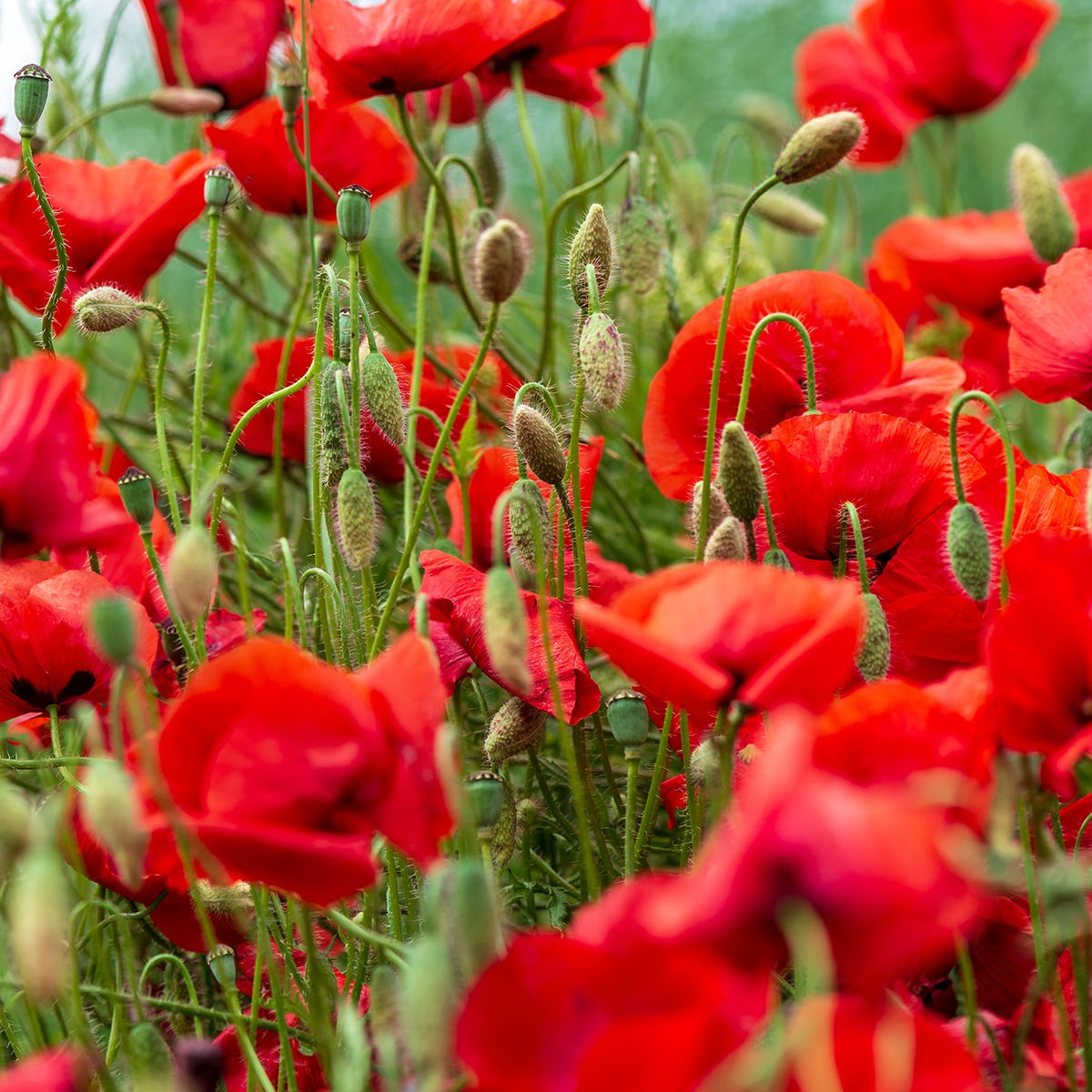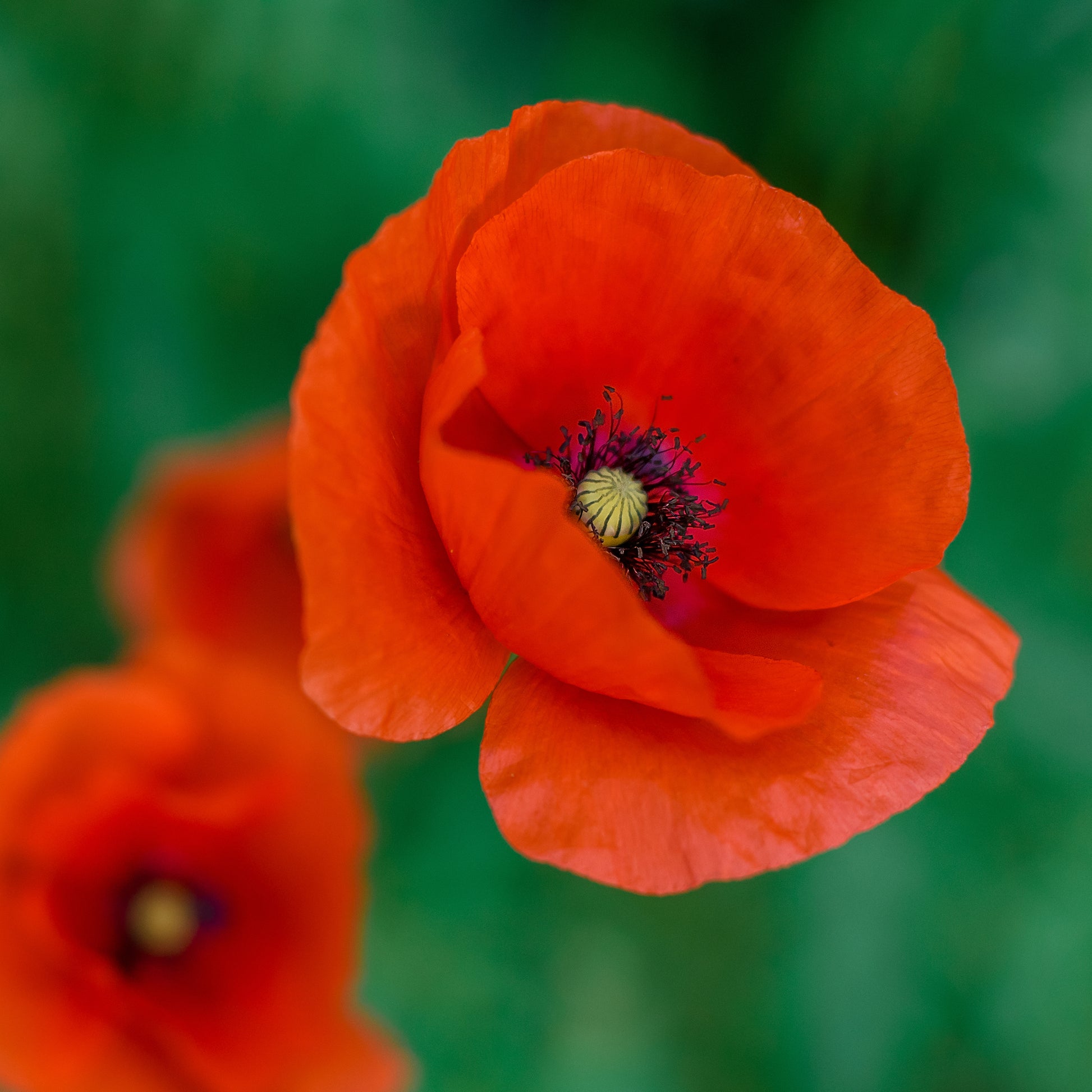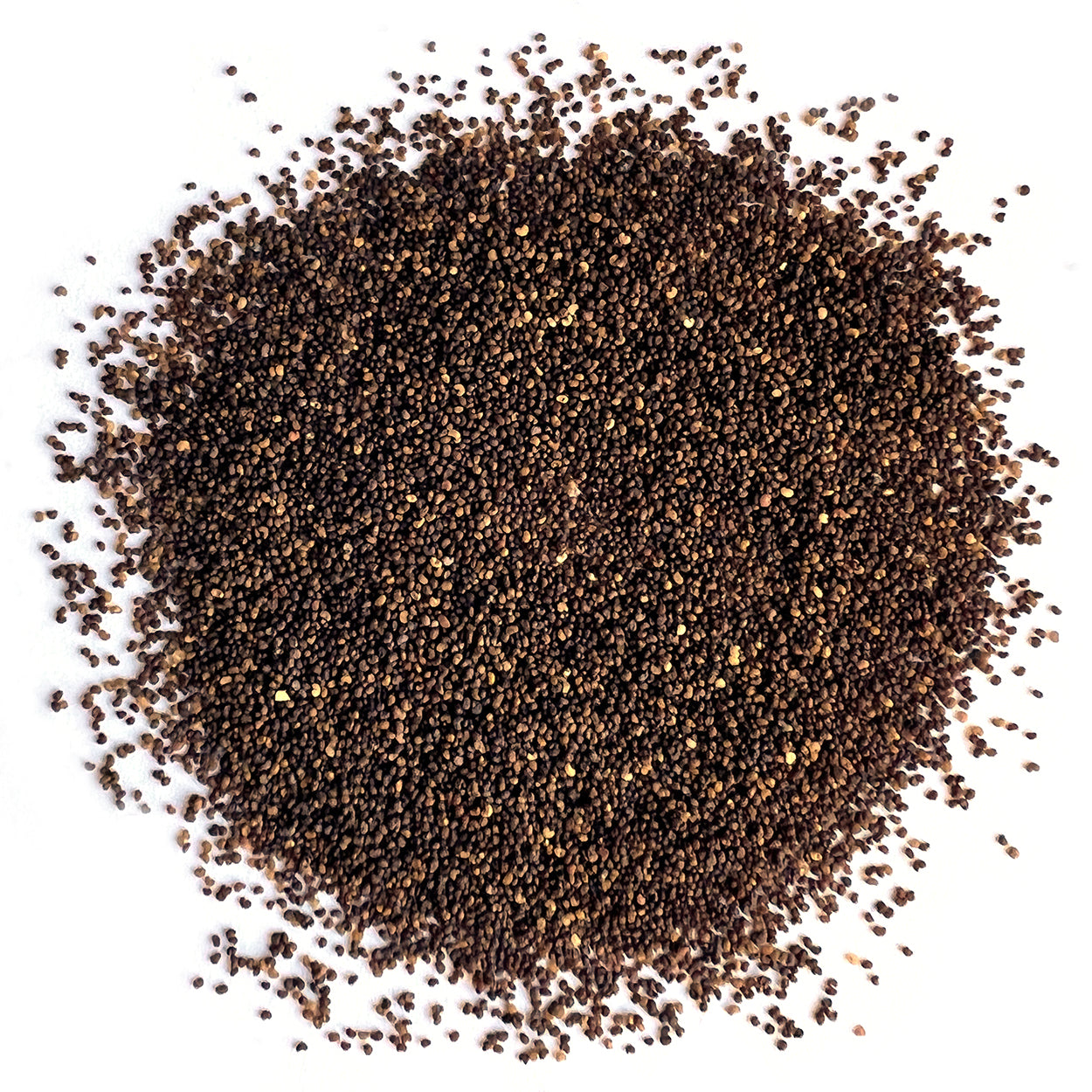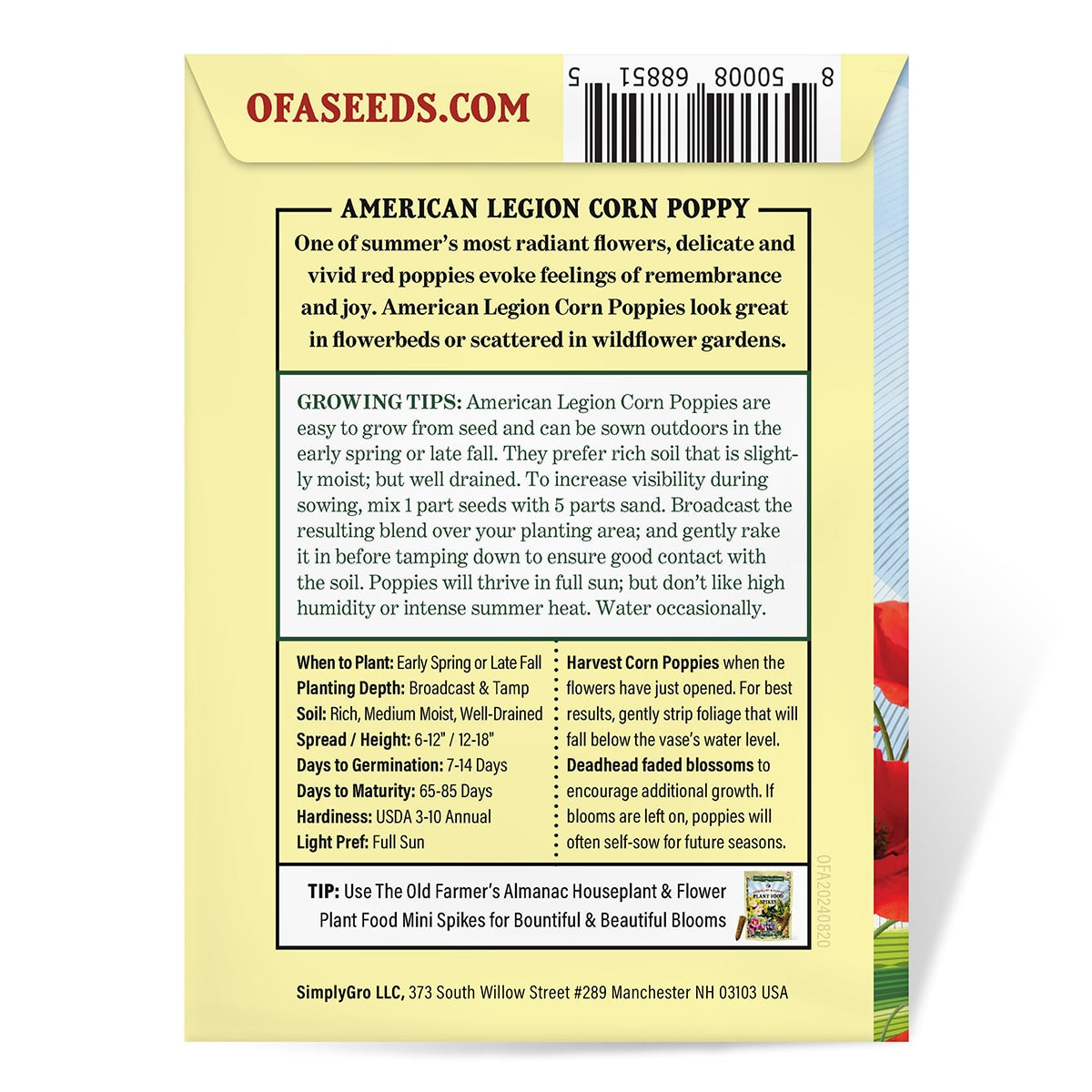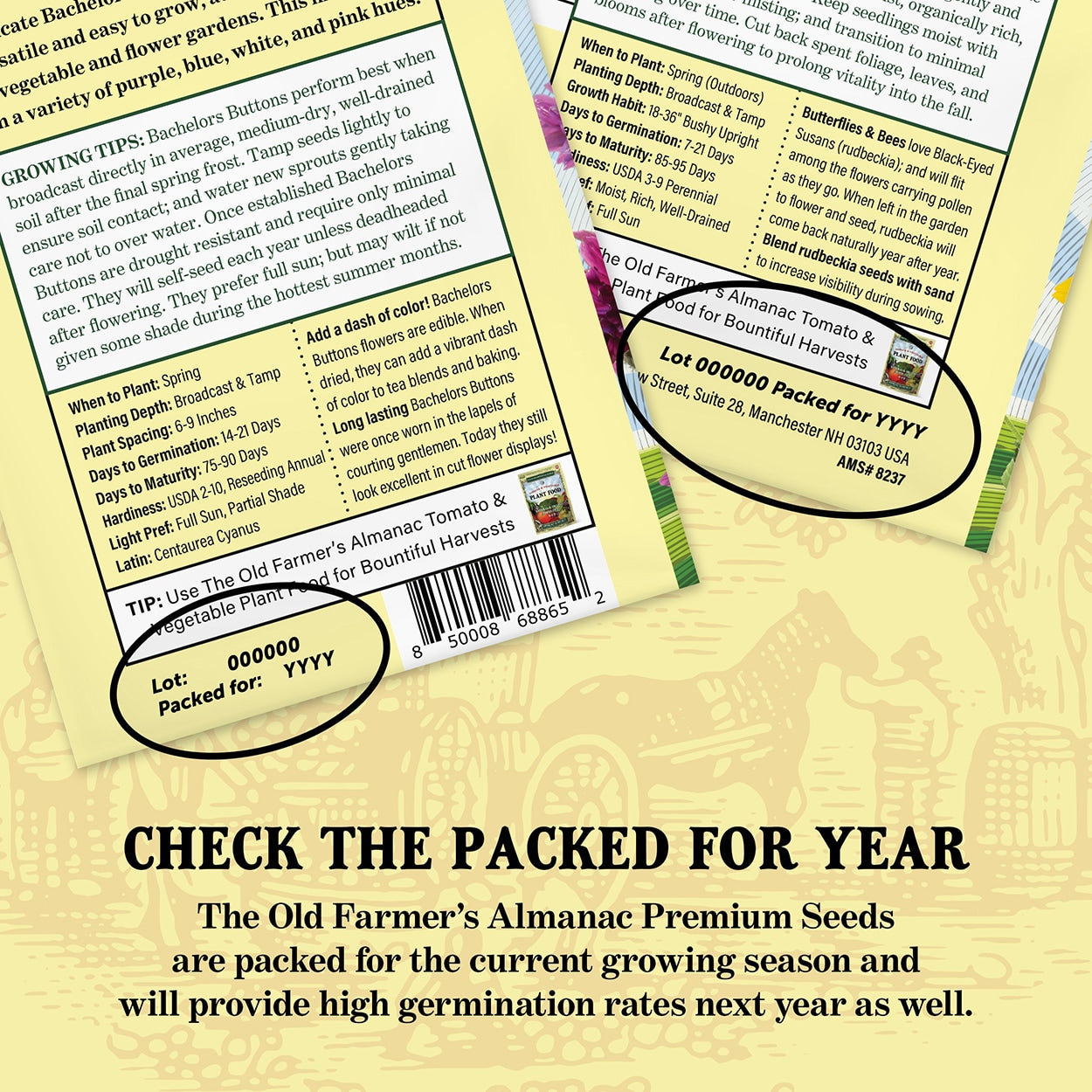Skip to product information
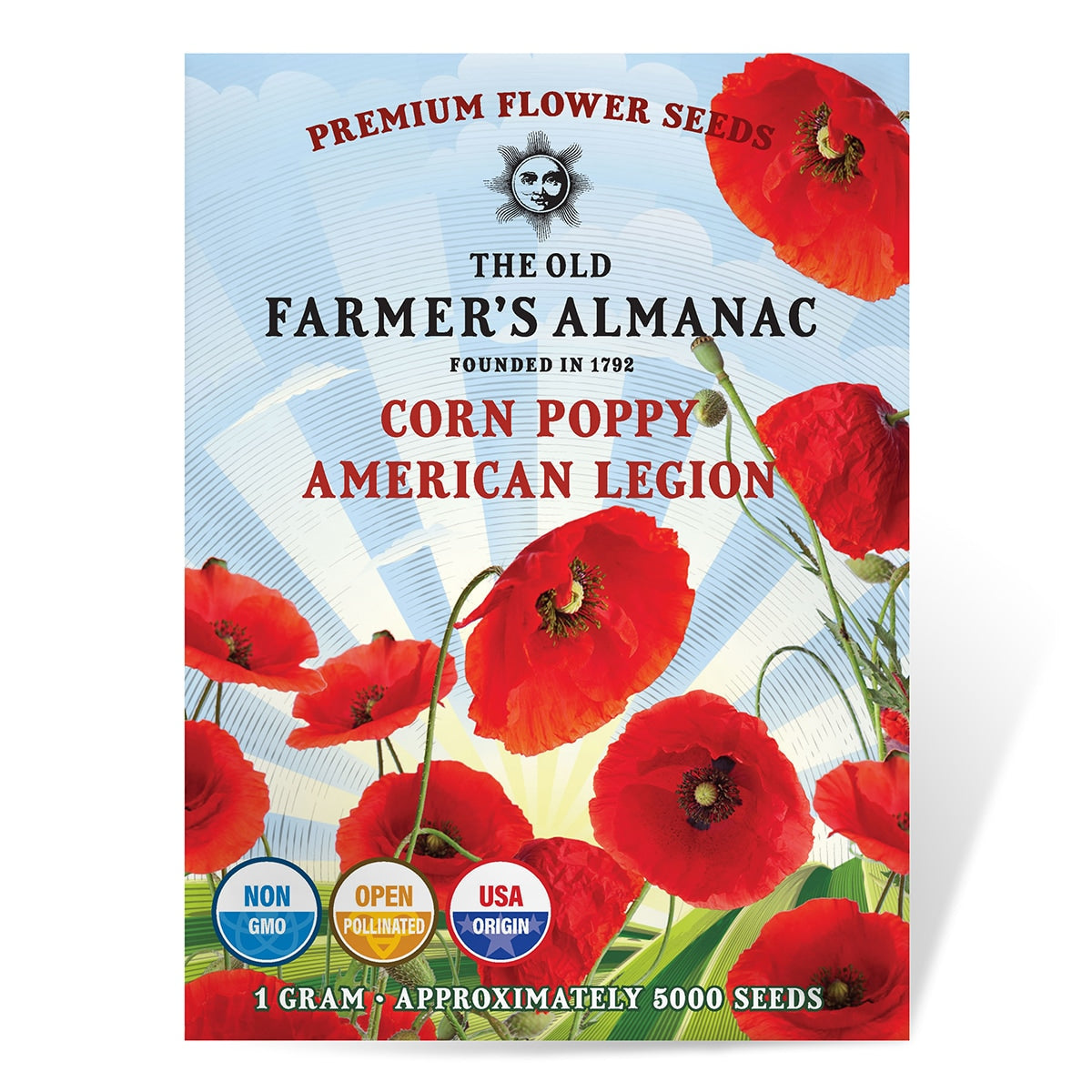
To add to cart, go to the product page and select a purchase option

The Old Farmer's Almanac American Legion Corn Poppy Seeds
$5.95
One of summer’s most radiant flowers, delicate and vivid red poppies evoke feelings of remembrance and joy. American Legion Corn Poppies look great in flowerbeds or scattered in wildflower gardens. Premium, non-GMO, American Legion Corn Poppy Seeds from The Old Farmer's Almanac have high germination rates and are proudly sourced from American farms.
DESCRIPTION
INSTRUCTIONS & GROWING TIPS
SPECIFICATIONS
- Brand: The Old Farmer's Almanac
- UPC / GTIN: 850008688515
- Country of Origin: United States
- Derived From:





